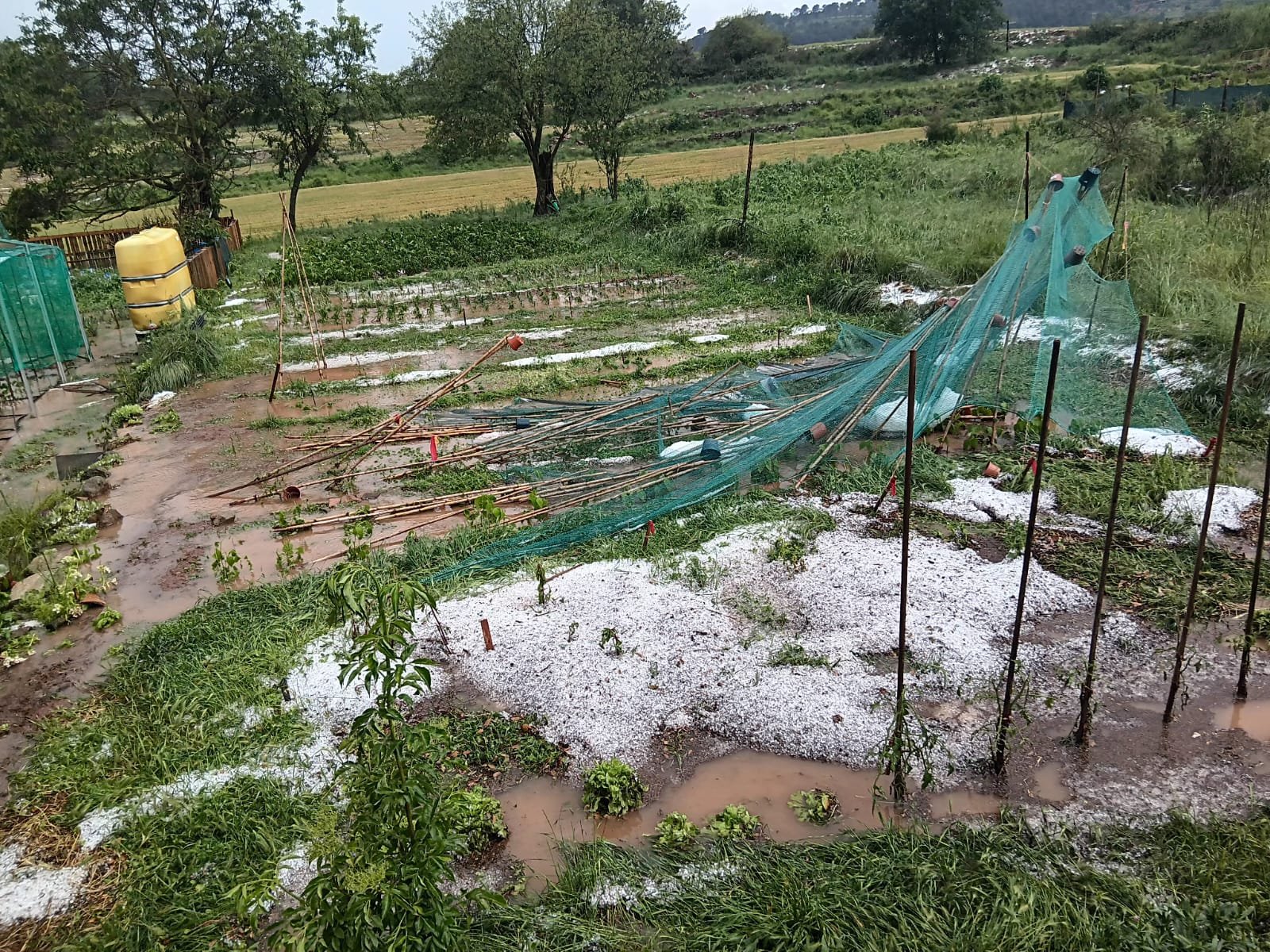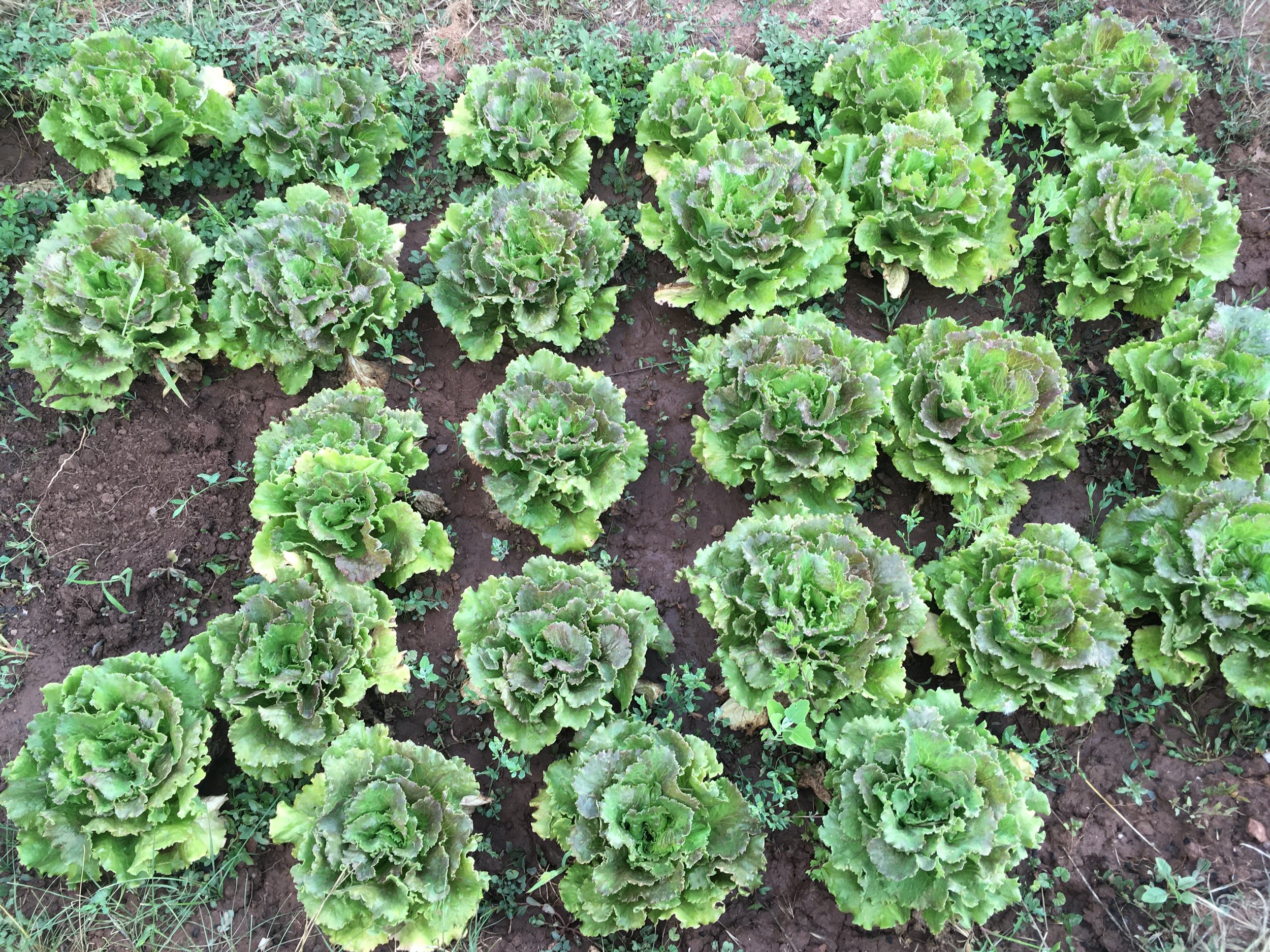Gardens of Loss
By Maria Coma Santasusana, PhD Candidate, Institut National de Langues et Civilisations Orientales (Inalco)
Lluís tends to his tomato plants in summer 2022 © author
“My fellow gardeners and I are losing hope”, says my father Lluís. His words feel heavy as we drive home through a bleak landscape of thirsty oaks and dead Scots pines. Behind the mortality of conifers and the gardeners’ feelings lies the same phenomenon: a severe drought that has been unfolding in Catalonia for over three years now (Hedgecoe 2023). The effects of the drought, exacerbated by extreme heat waves, have taken a heavy toll on forests, crops, and all the life forms entangled with them.
For over a decade, my father has grown vegetables and herbs in a 250m2 garden plot lined by a dry-stone wall, two plum trees and a well. To each side are his fellow gardeners’ plots. These five home gardens, standing in a row at the edge of a village of 6000 inhabitants in central Catalonia, add to thousands of others lying at the fringes of Catalonian towns and villages.
Summer is a time when these gardeners, mostly retired men in their seventies, spend long evenings tending to their neat rows of seasonal crops. They speak passionately about their love for growing vegetables and the unique flavour of their heirloom tomatoes, green beans, courgettes, cucumbers, aubergines, or lettuces. They give their produce away to close and extended family, neighbours, and friends.
But this summer, and the two before that, gardeners have seen their harvest significantly diminish. The persistent drought means gardeners can rely less and less on rainfall. Lack of water combined with record-high temperatures put a strain on their often-precarious irrigation systems. Water levels in wells and ponds are at their lowest, and the same goes for unreliable irrigation canals.
Heat waves, more frequent and intense as each year passes, also inhibit crop growth. Ramon, who tends to a garden at the edge of another village, used to harvest enough green beans to feed his family year-round. This summer, however, he saw the plants grow and the flowers bloom, only to fall suddenly to the ground before any fruit could develop. They gave in to the extreme heat, he recalls.
Other extreme weather events add to the mess: in mid-June 2023, flooding and hail destroyed Lluís’ young summer garden. In a matter of minutes, green bean and tomato plants were uprooted, lettuces drowned. The entry for that day in his garden diary reads: “Big flood with hail. Garden razed to the ground: protection net and support poles. From the dry-stone steps flows a stream. We are shaken. All mud and uprooted.” Although some tomato plants were revived, most of them were lost. The tomato harvest has been the lowest he can remember.
The garden after the flood of June 2023 © author
Gardeners experience weather as becoming drier, hotter, and more unpredictable. They also note that extreme events such as hail or violent winds are more frequent. Drought and soaring temperatures impact crop production directly through their effects on plant health and development but also indirectly, as field and forest-dwelling animals – birds, moles, rabbits, boars – do not have enough to eat and resort to gardens for nutrition, taking a heavy toll on crop yields.
Unpredictability means the gardeners’ knowledge of weather and seasons is becoming less reliable. “Before, clouds covering the hill north of the village meant rain would fall in the garden in less than an hour. Nowadays, more often than not, the clouds dissipate or go away, leaving our plots untouched”, says Manolo, who tends the garden next to Lluís’.
Gardeners also feel the garden calendar, with its Catholic saints’ feast days marking the sowing and planting dates, is no longer adjusted to crop phenology. Planting the summer vegetables around Saint Isidore day (May 15th), as gardeners usually do in the area where Lluís and Manolo live, leaves the crops too exposed to record-high temperatures at a time when they are particularly tender and vulnerable.
Lettuces planted ahead of time ready to harvest © author
Gardeners are increasing their efforts at keeping their plots green and productive by adjusting the planting calendar to the longer and hotter summers they’ve already experienced and will most likely continue. They also employ new tools and techniques. Protection nets shielding crops from hail and birds are a new thing, as is the use of mulching to retain humidity. These creative explorations testify to the gardeners’ willingness to adapt their practice to a changing and yet very much unknown climate.
My conversations with my father and other gardeners were marked by a profound sense of frustration and exhaustion over everything that this, - and previous - cruel summers have taken away from them: water, abundant harvests, faith in their practice. What gardeners lose when extreme weather ravages their crops are not only the vegetables or the pleasure they take in tending to their plants but also the multiple webs of multispecies interdependencies they are entangled with through their gardening practice (Tsing et al. 2017 p. 7). Extreme weather events disrupt the collective work of soil, seeds, pollinators, and humans taking place in home gardens. These gardens are then inserted into wider networks of human relationships through food exchange. Gardeners like Lluís, Ramon, and Manolo generate food sovereignty and sustain reciprocal relations with their communities. Losing the capacity to do so feels deeply upsetting.
In early September, the air still hot and dry, my friend Montse comes over with a basket of fresh green beans from her uncle’s garden in hand. Later, as I wash and cut the beans for dinner, I notice their unusually small size and think of heat waves and the green beans’ sensitivity to them. That the beans grew at all, and that I have received them, feels like a miracle. My friend’s uncle and I have never met, yet the fruits of his labour have reached my kitchen and will nourish me for a few meals. Hope might not be completely lost, after all.
References
Hedgecoe, G. (2023, April 4) “Climate change: Catalonia in grip of worst drought in decades.” BBC. https://www.bbc.com/news/world-europe-65129735
Tsing, A. et al. (2017) Arts of Living on a Damaged Planet. University of Minnesota Press.



